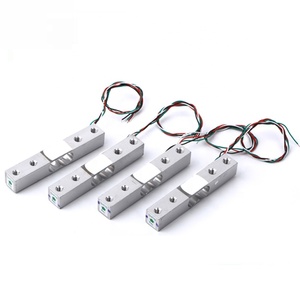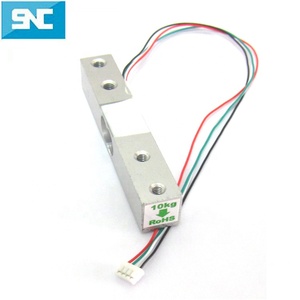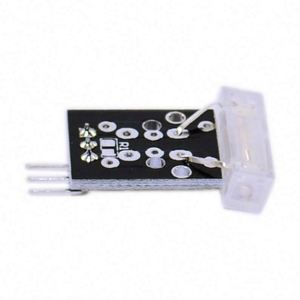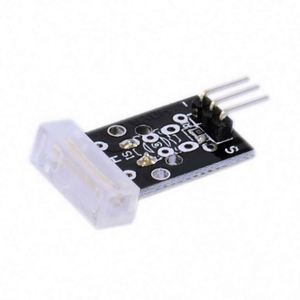
All categories
Featured selections
Trade Assurance
Buyer Central
Help Center
Get the app
Become a supplier

(140 products available)








































Piezoelectric Sensors
Piezoelectric sensors are the most widely used types of knock sensors in vehicles. They detect vibrations caused by engine knock. When knock occurs, it creates vibrations or mechanical waves in the engine block. These waves induce small electrical signals in the piezoelectric crystal. The sensor continuously monitors the electrical signals. If the sensor detects a sudden change in the signals that indicates engine knock, it triggers the engine control unit (ECU) to take corrective actions. For example, the ECU may adjust the ignition timing to prevent potential damage. Piezoelectric sensors are compact and can be easily mounted on the engine block. They also have a quick response time, allowing them to detect knock vibrations in real time.
Capacitive Sensors
Capacitive sensors are another type of knock sensor used in some modern vehicles. They work on the principle of capacitance changes due to engine vibrations. The sensor has two conductive plates separated by a dielectric material. Under normal engine conditions, there is a specific distance and capacitance between the plates. However, if engine knock occurs, it causes mechanical vibrations that alter the distance between the plates. This change results in a variation in capacitance. The knock sensor continuously monitors the capacitance levels. If it detects a significant change that indicates engine knock, it alerts the ECU. Similar to piezoelectric sensors, capacitive sensors can trigger the ECU to modify engine parameters and prevent knock-related issues.
Inductive Sensors
Inductive sensors are less common but still used in some specialized vehicles or older engine designs. These sensors utilize the principles of electromagnetism to detect engine knock. They consist of coils of wire that generate magnetic fields. When engine knock occurs, it leads to mechanical disturbances that affect the magnetic fields. The disturbances induce electrical signals in the sensor's coils. The inductive sensor continuously monitors the induced signals. If it detects a pattern that corresponds to engine knock, it sends a signal to the ECU. The ECU can then take appropriate actions to mitigate knock and protect the engine.
A detailed understanding of knock sensor specifications can help buyers get the right module for every application. Here's what to expect from a KS module package:
Maintaining a knock sensor module is crucial in ensuring it functions optimally and lasts longer. Here are some general guidelines for maintaining a KS module:
There are several factors that buyers need to consider when purchasing engine knock sensors. These factors are also important when choosing vehicle parts to ensure they meet the target market needs. They are as follows:
Sensor location
The sensor location is critical as it determines the sensor's ability to detect knock signals accurately. Manufacturers place sensors in one of three locations: the engine block, cylinder head, or manifold. Each location has its advantages and disadvantages. For instance, knock sensor modules placed on the engine block are more reliable and accurate. However, they are more expensive and difficult to install. Buyers should advise their clients to choose sensors placed at locations that balance cost, accuracy, and installation difficulties.
The type of engine
Engine knock sensor modules are designed for specific engine types. It is important to choose a sensor designed for the client’s engine to increase its effectiveness. Generally, buyers can find knock sensors for gasoline, diesel, and electric engines. Gasoline and diesel engines are prone to knocks and require effective knock detection systems. Electric engines have a low knock tendency and may not require a knock sensor. However, due to the increasing demand for electric vehicles, some buyers may find it necessary to install knock sensors in electric engines to improve engine performance and protect the engine from possible knocks.
Wiring and connector compatibility
Buyers should ensure the sensor's wiring and connectors are compatible with the vehicle’s engine control unit. If there is a mismatch, it could lead to communication failure between the knock sensor module and the engine control unit. This will render the sensor useless. To avoid such problems, buyers should examine the sensor's wiring harness, connector shape, and pin configuration and ensure they match the vehicle's engine control system.
Sensitivity and reliability
To protect the engine from damage effectively, buyers should choose knock sensors with high sensitivity and reliability. The ability to detect knock signals accurately and consistently is an important feature to consider. Different sensor modules have varying sensitivity levels. Buyers should look for sensors with high sensitivity levels and low false alarm rates to ensure the engine runs smoothly and efficiently.
Quality and warranty
To ensure the knock sensor module has a long lifespan and dependability, buyers should choose high-quality sensors. It's advisable to purchase sensors from reputable manufacturers. Such sensors might be slightly costly, but they are worth the investment. Additionally, buyers should consider the manufacturer's warranty. A substantial warranty period is a good indicator of the product's quality and durability.
Worried that the vehicle's knock sensor might be malfunctioning? Well, with a little mechanical knowledge, one can replace it. Here are the steps to follow when replacing the sensor.
Tools Needed
To get the job done, gather these tools: New knock sensor, socket wrench set, torque wrench, extension socket, ratchet, anti-seize compound, and a vehicle repair manual.
Step 1: Preparation
Firstly, disconnect the negative battery cable with a wrench. Then, locate where the old knock sensor is placed, whether under the intake manifold or on the engine block, based on the vehicle repair manual.
Step 2: Remove the Old Sensor
Remove the electrical connector from the old sensor. Then, use a socket wrench to remove the sensor. It may be necessary to remove other components, like the intake manifold, to access the sensor.
Step 3: Prepare the New Sensor
Before installing a new sensor, apply a small amount of anti-seize compound to the threads.
Step 4: Install the New Sensor
Position the new knock sensor module in place and tighten it carefully to avoid damaging it. Then, reconnect the electrical connector to the sensor.
Step 5: Reassemble and Test
Put back any components that were removed. After reconnecting the vehicle's battery cable, start the car and listen to ensure it runs smoothly. If the problem persists, consult a professional mechanic.
Q1: Can a car run without a knock sensor?
A1: Yes, technically, a car can run without a knock sensor. However, it is not recommended as it can lead to damage to the engine. Without a knock sensor, the engine control unit (ECU) cannot detect or respond to knock signals, potentially leading to engine knocks, reduced performance, and increased emissions.
Q2: What is a knock sensor made of?
A2: A knock sensor is typically made of piezoelectric materials, which can generate an electric signal when they experience mechanical stress or vibration. This property makes them suitable for detecting the high-frequency vibrations associated with engine knocking.
Q3: Where is the knock sensor located?
A3: The knock sensor is usually located on the engine block, cylinder head, or intake manifold. Its exact location can vary depending on the engine design and manufacturer.
Q4: How does a knock sensor work?
A4: The knock sensor works by detecting the high-frequency vibrations or sounds that are characteristic of engine knocking. When it detects such signals, it sends a message to the engine control unit (ECU), which can then adjust the ignition timing or take other corrective actions to prevent knock and protect the engine.